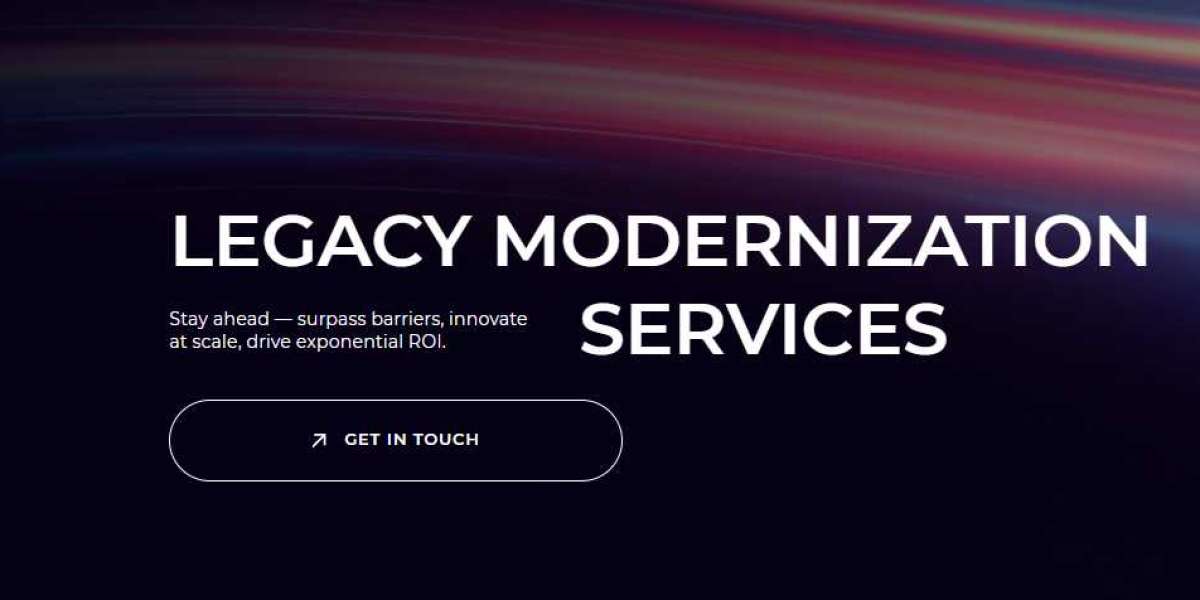In today’s hyper-competitive digital economy, businesses face relentless pressure to stay ahead of the curve. Customers expect seamless digital experiences, employees demand tools that enable flexible and productive work, and competitors are quick to adopt new technologies that drive efficiency and innovation. Against this backdrop, cloud migration has emerged as one of the most powerful strategies for organizations seeking rapid modernization.
Cloud migration—the process of moving applications, data, and IT resources from on-premises environments to cloud infrastructure—is no longer just an IT initiative. It is a cornerstone of business transformation. Companies that successfully execute cloud migration gain scalability, agility, cost efficiency, and a foundation for emerging technologies such as artificial intelligence (AI), machine learning (ML), and Internet of Things (IoT).
Why Modernization Can’t Wait
Legacy systems have long served as the backbone of many businesses, running critical operations such as finance, supply chain, and customer relationship management. However, these systems often come with significant drawbacks:
High Maintenance Costs: Maintaining aging infrastructure consumes a disproportionate share of IT budgets.
Limited Scalability: Legacy systems often cannot keep up with growing user demands or sudden surges in workload.
Security Risks: Outdated software is more vulnerable to cyber threats, leaving organizations exposed to data breaches.
Integration Challenges: Connecting legacy systems with modern applications can be complex and resource-intensive.
The opportunity cost of inaction is steep. Organizations that delay modernization risk losing market share to more agile competitors. By contrast, those who migrate to the cloud gain a modern foundation that supports innovation, speeds time to market, and enhances customer experiences.
The Case for Cloud Migration
Cloud migration is often the most direct route to modernization for several reasons:
1. Speed and Agility
Traditional infrastructure projects can take months—or even years—to plan, procure, and deploy. The cloud eliminates this delay by providing on-demand access to computing resources. Organizations can spin up virtual machines, databases, and applications in minutes, accelerating innovation cycles.
2. Cost Optimization
Migrating to the cloud shifts spending from a capital expenditure (CapEx) model to an operational expenditure (OpEx) model. Businesses pay only for the resources they use, and can scale up or down based on demand. This flexibility reduces waste and frees up budget for strategic initiatives.
3. Enhanced Security
Contrary to early misconceptions, cloud environments often provide stronger security than on-premises systems. Leading cloud providers invest heavily in encryption, compliance certifications, and threat detection systems—resources that may be cost-prohibitive for individual organizations.
4. Support for Innovation
Modern cloud platforms include built-in services for AI, analytics, and automation. By migrating workloads to the cloud, companies gain access to these tools without having to build them in-house. This democratizes innovation and allows even smaller organizations to compete on a global scale.
5. Workforce Enablement
With applications and data hosted in the cloud, employees can work from anywhere, using any device. This flexibility supports remote work, improves collaboration, and increases employee satisfaction and retention.
Migration Strategies: Choosing the Right Path
Not all migrations are created equal. The optimal approach depends on the organization’s current IT landscape, business goals, and risk tolerance. Here are the most common migration strategies:
1. Rehosting ("Lift and Shift")
Rehosting involves moving applications to the cloud with minimal changes. It is the fastest and often least expensive approach, making it ideal for organizations looking to quickly exit data centers or reduce infrastructure costs. However, rehosting may not fully leverage the benefits of cloud-native architecture.
2. Replatforming ("Lift, Tinker, and Shift")
This approach makes limited optimizations during migration, such as upgrading databases or moving to managed services. Replatforming balances speed and modernization by improving performance without requiring a complete rebuild.
3. Refactoring
Refactoring (or re-architecting) involves redesigning applications to be cloud-native. While this is the most time-consuming and costly strategy, it delivers the greatest long-term value by enabling microservices, serverless computing, and auto-scaling capabilities.
4. Replacement
In some cases, it is more efficient to replace legacy applications entirely with modern SaaS (Software-as-a-Service) solutions. This approach eliminates technical debt but may require significant business process changes.
Overcoming Common Challenges
While cloud migration offers compelling benefits, it is not without challenges. Organizations must plan carefully to avoid disruptions and unexpected costs. Key considerations include:
Data Security and Compliance: Businesses must ensure compliance with regulations such as GDPR, HIPAA, or SOC 2 when moving sensitive data to the cloud.
Downtime Risk: Without a phased approach, migrations can cause downtime that disrupts operations.
Skills Gap: IT teams may need training to manage cloud environments effectively.
Cost Management: Poorly planned migrations can result in “cloud sprawl,” where underutilized resources drive up costs.
This is where legacy modernization solutions become essential. These solutions help assess the current IT landscape, prioritize workloads, automate code transformation, and orchestrate the migration process—reducing risk and accelerating time to value.
Best Practices for a Successful Cloud Migration
To maximize the benefits of cloud migration, organizations should follow these best practices:
1. Develop a Clear Business Case
Migration is not just a technical project—it must align with business objectives. Define measurable goals such as reducing infrastructure costs by 30%, improving application response times, or enabling faster product launches.
2. Conduct a Readiness Assessment
Perform a comprehensive audit of existing applications, dependencies, and infrastructure. Identify which workloads are cloud-ready and which require refactoring or replacement.
3. Choose the Right Cloud Model
Decide whether a public, private, or hybrid cloud best meets your needs. Hybrid models are often preferred for organizations with strict compliance requirements or latency-sensitive workloads.
4. Build a Skilled Team
Invest in training or hire experienced cloud architects and engineers. A skilled team can prevent costly mistakes and optimize cloud resources for performance and cost efficiency.
5. Leverage Automation
Use automation tools for workload discovery, migration planning, and deployment. Automation minimizes human error, speeds up migration, and reduces downtime.
6. Monitor and Optimize Post-Migration
Migration does not end when workloads are live in the cloud. Continuously monitor performance, security, and costs, and use analytics to fine-tune operations.
The Role of Legacy Modernization Solutions
Legacy modernization is the bridge between outdated technology and cloud-enabled innovation. Modernization tools can analyze existing applications, identify technical debt, and recommend the optimal migration path. Some platforms even offer automated code refactoring, turning monolithic applications into microservices with minimal manual effort.
By incorporating legacy modernization solutions, businesses can:
Accelerate Time-to-Cloud: Automated analysis and refactoring speed up migration timelines.
Reduce Risk: Identify potential migration issues early to avoid downtime.
Enhance Performance: Modernized applications run more efficiently on cloud infrastructure.
Unlock Innovation: Freeing applications from legacy constraints enables the use of advanced cloud services.
Real-World Example: Cloud Migration in Action
Consider a global retail company struggling with legacy systems that slowed online transactions and created frequent outages during peak seasons. By adopting a cloud migration strategy, the company rehosted its e-commerce platform on a scalable cloud infrastructure and used legacy modernization solutions to refactor its inventory management system.
The result was a 40% improvement in website performance, a significant reduction in downtime, and the ability to scale resources dynamically during Black Friday and holiday sales. Beyond technical improvements, the company could now roll out new features in weeks rather than months—directly impacting customer satisfaction and revenue growth.
Conclusion
Cloud migration is no longer optional for organizations seeking to thrive in the digital era. It is the fastest and most effective path to modernization, offering agility, cost savings, security, and a foundation for future innovation. However, a successful migration requires a strategic approach that includes workload assessment, skilled talent, automation, and continuous optimization.
By leveraging legacy modernization solutions, businesses can bridge the gap between aging systems and cloud-native environments, reduce risk, and accelerate their journey to modernization. Whether through rehosting, replatforming, or full refactoring, cloud migration is a critical enabler of business transformation—empowering organizations to compete, innovate, and grow in an increasingly dynamic marketplace.








